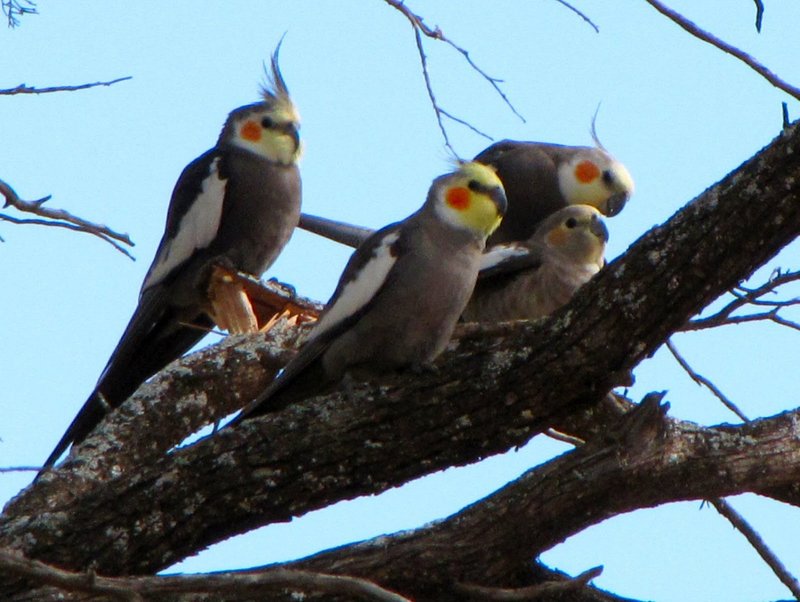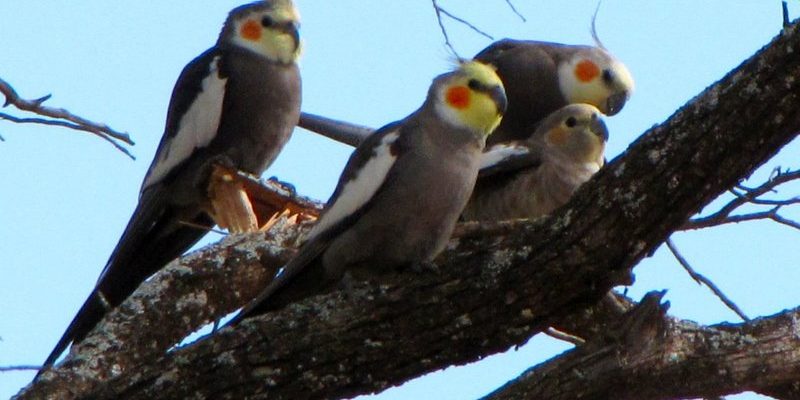
Just like how every favorite restaurant has its own set of ingredients that make it special, cockatiels have unique traits that help them survive in the wild. Their habitats, behaviors, and even their diets play crucial roles in their lives. However, when those ingredients start to disappear—due to habitat loss or other threats—it can spell trouble for the birds. Understanding the status of cockatiels in the wild helps us appreciate them even more and highlights the importance of protecting their natural environment.
Understanding Cockatiel Habitats
Cockatiels are native to Australia, where they roam the open forests, woodlands, and grasslands. They enjoy environments that allow for plenty of social interaction, which is critical to their well-being. Imagine walking into a large, bustling café filled with lively chatter—that’s how cockatiels thrive in the wild, always surrounded by their flock.
Their natural habitat provides food sources like seeds, fruits, and nuts, as well as places to nest. When looking for a home, cockatiels prefer tall trees where they can build their nests in safety. Unfortunately, habitat destruction from logging, farming, and urban development alters their landscapes dramatically, leaving them vulnerable.
As we explore their habitats further, it’s essential to understand how seasonal changes affect their behavior. During dry seasons, cockatiels may migrate in search of water, making them susceptible to predators and human interference. When we disrupt their natural movements, we not only threaten their survival but also alter the ecosystem balance.
Population Status and Threats
You might be surprised to learn that the International Union for Conservation of Nature (IUCN) currently lists cockatiels as “Least Concern.” This means they aren’t officially classified as endangered right now. However, just because they’re not considered endangered doesn’t mean we should stop paying attention to their populations.
While cockatiels aren’t facing immediate extinction, they do face several threats. One significant issue is habitat loss. As more forests are cleared for agriculture or urban development, the places where cockatiels nest and feed shrink. This can lead to overcrowding in remaining areas, where competition for resources becomes fierce.
Another danger comes from climate change. Shifts in weather patterns can disrupt food availability, affecting not only cockatiels but the entire ecosystem they depend on. When their food sources dwindle, these birds struggle to thrive.
Impact of the Pet Trade
The cockatiel is also a popular pet, and while that sounds cute, the pet trade can unintentionally harm wild populations. Many people might assume that breeding cockatiels in captivity helps protect wild populations. However, when wild birds are captured for the pet trade, it can reduce their numbers in the wild.
Wild caught cockatiels often suffer from stress, and many don’t adapt well to life in captivity. The demand for these charming birds can encourage poaching, leading to a decline in their populations. It’s crucial for potential pet owners to consider adopting from reputable breeders or rescues rather than purchasing wild-caught birds.
By understanding the impact of the pet trade, we can make informed decisions that help protect these birds. Education is key here. The more we know about cockatiels and their needs, the more we can advocate for their conservation.
Conservation Efforts
Fortunately, there are many dedicated individuals and organizations working to protect cockatiels and their habitats. Conservation efforts often focus on restoring habitats, protecting breeding grounds, and educating the public about the importance of maintaining biodiversity.
For example, some local initiatives promote responsible land use and sustainable agriculture practices that can help preserve natural cockatiel habitats. These projects often work hand-in-hand with local communities to raise awareness about ecological balance and wildlife conservation.
Additionally, birdwatching and eco-tourism initiatives can bring valuable attention to these birds. By encouraging people to appreciate cockatiels in their natural environments, we can foster a sense of responsibility towards their survival. The more people see and connect with wildlife, the more likely they are to support conservation efforts.
Your Role in Cockatiel Conservation
You might be wondering, “What can I do to help cockatiels?” Fortunately, every one of us can play a part in ensuring these beautiful birds don’t face further challenges. Here are some easy ways to get involved:
- Raise Awareness: Share information about cockatiels with friends and family. The more people know, the better.
- Support Conservation Groups: Consider donating to or volunteering with organizations that focus on bird conservation.
- Choose Wisely: If you plan to get a pet, adopt from shelters or choose reputable breeders that prioritize animal welfare.
- Advocate for Sustainability: Support policies that protect natural habitats and promote environmental responsibility.
Every small action can lead to bigger changes. By working together, we can contribute to a future where cockatiels can thrive in the wild, alongside other species.
The Future of Cockatiels
Looking ahead, the future of cockatiels hinges on collective action and understanding. While they’re not classified as endangered at the moment, it’s clear that they face challenges that need addressing. By protecting their habitats, reducing the impact of the pet trade, and raising awareness about their plight, we can help secure a brighter future for these delightful birds.
Ultimately, understanding where cockatiels stand gives us an opportunity to appreciate them even more. Each time you hear a cockatiel whistle, remember that their survival depends on us. Let’s take the steps needed to ensure they continue to fill our lives with joy for years to come.
In conclusion, while cockatiels aren’t officially threatened or endangered, they still face significant challenges. By being informed and involved, we help protect these endearing birds and their habitats. So next time you see one, take a moment to appreciate them—not just as pets but as a vital part of our world’s biodiversity.

